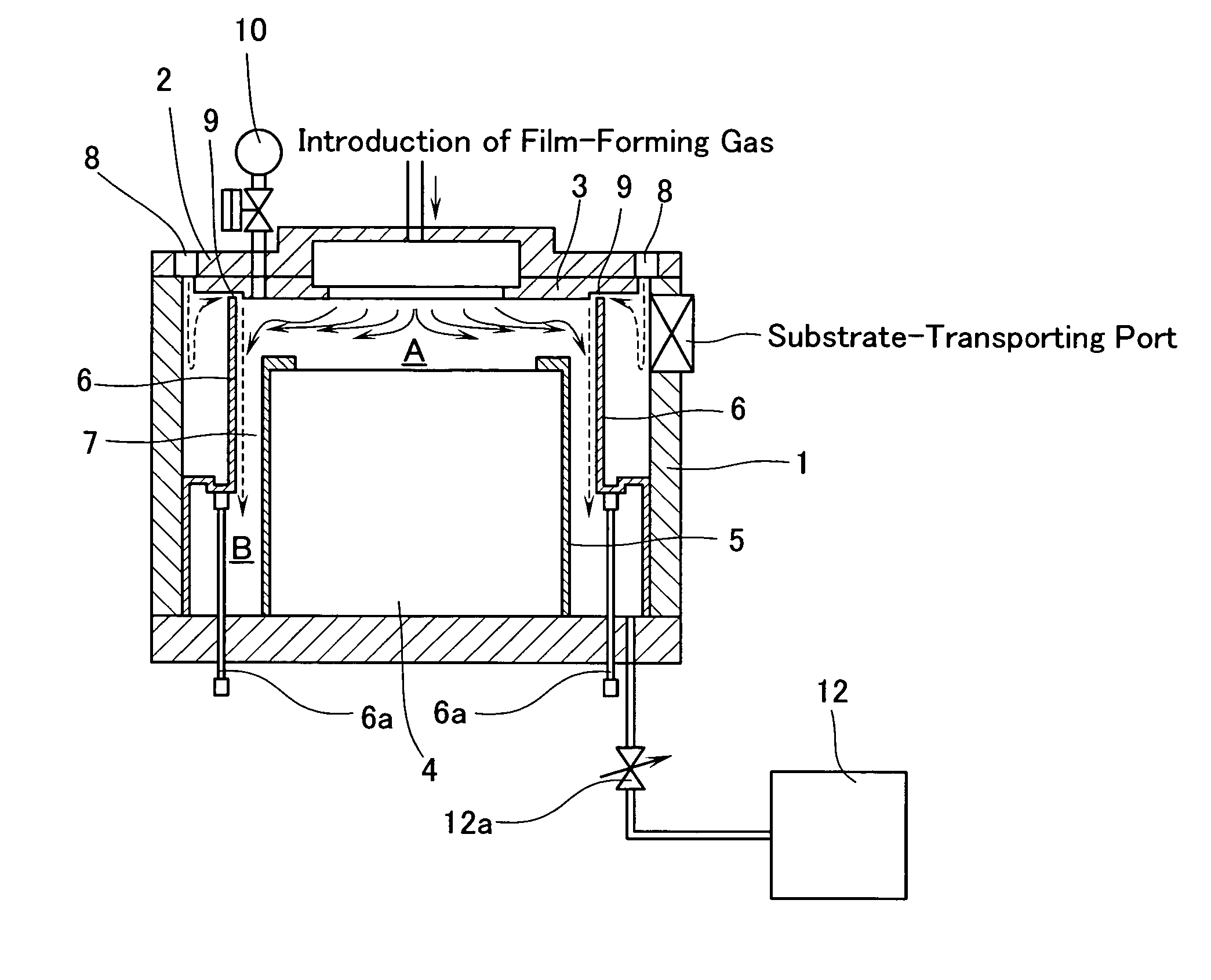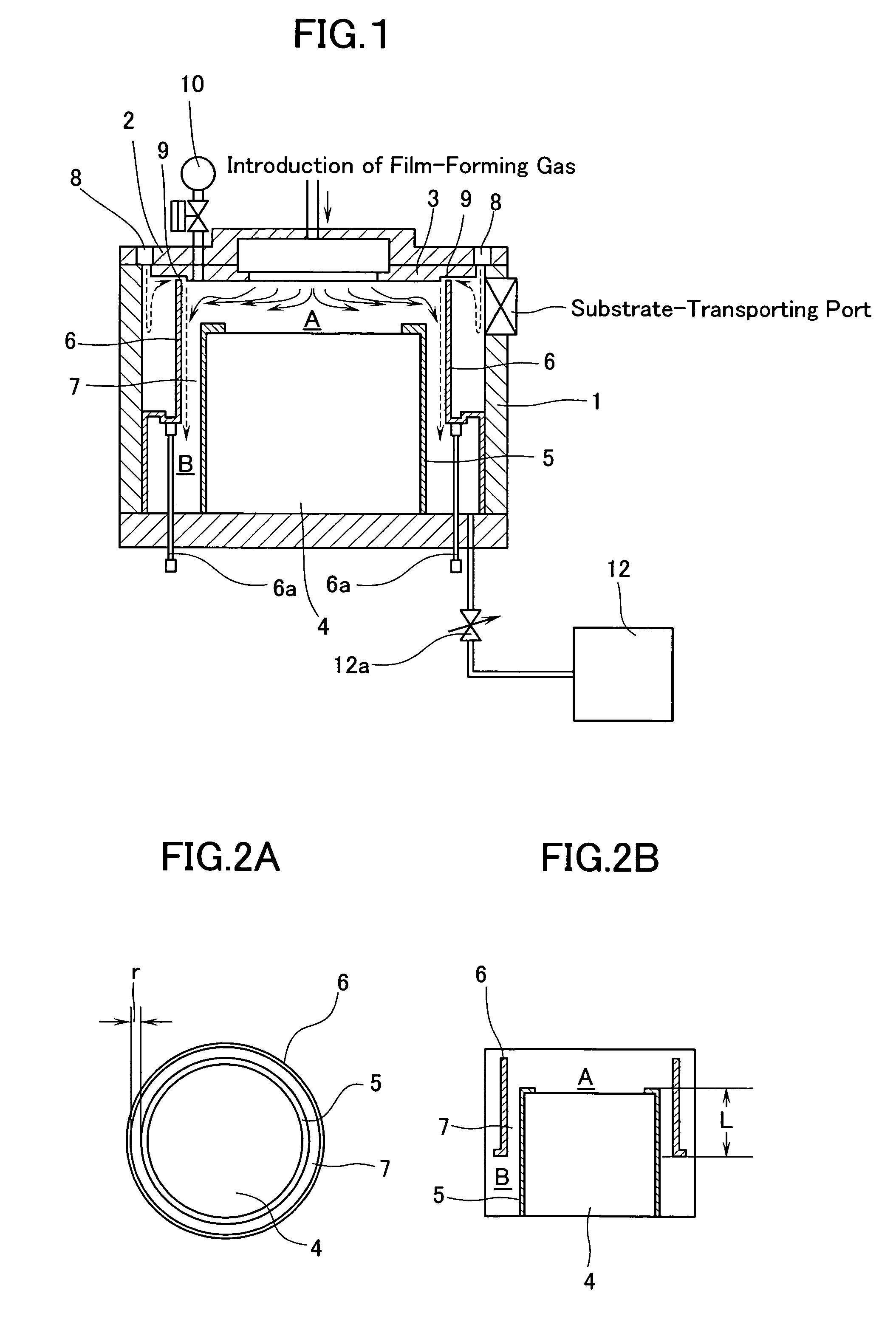Device and method for manufacturing thin films
a manufacturing device and thin film technology, applied in the direction of coatings, chemical vapor deposition coatings, metallic material coating processes, etc., can solve the problems of shortening the maintenance cycle of the mass-production device, loss of the balance and loss of the concentric exhaust port balance, etc., to achieve good film thickness distribution, composition distribution and film-forming rate, and stable and continuous formation.
- Summary
- Abstract
- Description
- Claims
- Application Information
AI Technical Summary
Benefits of technology
Problems solved by technology
Method used
Image
Examples
examples
[0090]The device and method according to the present invention will hereunder be described with reference to the following Examples, but the present invention is not restricted to these specific Examples at all.
[0091]The following are standard film-forming conditions for preparing PZT films according to the MOCVD technique. In the following Examples, thin films were formed under these film-forming conditions using the device of the present invention.
[0092]
Raw MaterialConcentrationEstablished Flow RatePb(dpm)2 / THF0.3 mole / L1.16mL / minZr(dmhd)4 / THF0.3 mole / L0.57mL / minTi(iPrO)2(dpm)2 / THF0.3 mole / L0.65mL / minN2 (carrier gas)—500sccmReactive Gas: O22500sccmInert gas at the periphery of gas head: N21500sccmFilm-Forming Pressure: This is always adjusted to a constant value of 5 Torr using a pressure control valve.Temperature of Substrate: 580° C.Shower Plate-Substrate Distance: 30 mm
[0093]Using a thin film-manufacturing device shown in FIG. 1, a PZT film was formed on an electrode substrate ...
PUM
| Property | Measurement | Unit |
|---|---|---|
| width | aaaaa | aaaaa |
| width | aaaaa | aaaaa |
| distance | aaaaa | aaaaa |
Abstract
Description
Claims
Application Information
 Login to View More
Login to View More - R&D
- Intellectual Property
- Life Sciences
- Materials
- Tech Scout
- Unparalleled Data Quality
- Higher Quality Content
- 60% Fewer Hallucinations
Browse by: Latest US Patents, China's latest patents, Technical Efficacy Thesaurus, Application Domain, Technology Topic, Popular Technical Reports.
© 2025 PatSnap. All rights reserved.Legal|Privacy policy|Modern Slavery Act Transparency Statement|Sitemap|About US| Contact US: help@patsnap.com



